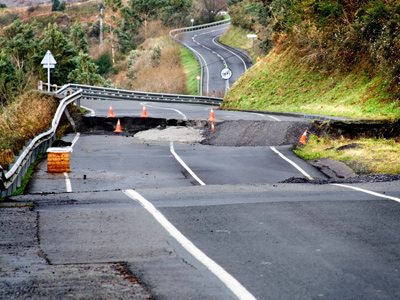As part of your high school geography studies of how the Earth actually works, you will be required to study earthquakes. Not only do you need to know what causes them, you need to know how they affect human lives in both rich and poor countries. You may be challenged to examine information from geographical information systems in order to draw conclusions from the data.
The Earth is made up from a number of different layers, the core, the mantle and the crust. The crust is cracked into large plates which move slowly. It is believed that convection currents in the upper mantle causes this to happen. The movements are measured in centimeters per year but, because the plates are massive, the forces involved with their movements are enormous.
Where these plates come together, various things can happen.
One thing is for certain, one of the plates must be pushed back down into the mantle. This process only stops when the plates become completely welded together, forming a mountain range like the Alps or Himalayas. This is called a destructive boundary as one of the plates is destroyed. As one plate descends beneath the other, the movement is not smooth. The plates lock together, so strain builds up in the locked portion. When the strain is greater than the strength of the rocks, they break and movement resumes. The strain is released as a series of shockwaves traveling through the crust. This is what we know as an earthquake.
The shockwaves from a large earthquake can be very destructive when they reach the surface of the Earth. Compared to a LEDC, a MEDC that has been hit by an earthquake will usually suffer less damage and less loss of life in the main towns and cities since they have the money to build earthquake resistant buildings.
The earthquakes that are produced at destructive plate boundaries occur deep in the crust. Where plates slide past each other, it is known as a conservative boundary. Again, the plates do not move smoothly. They lock together for decades or even centuries but the plates keep moving. When the rocks break under the accumulated strain, a shallow earthquake occurs. These too can be extremely destructive. At constructive plate boundaries, as the plates move apart, the rocks between them break which can also be a cause of shallow earthquakes.
Even though the UK is not on a plate boundary, we still get earthquakes, but very small ones. Despite that, they have been known to damage older or weaker houses. These are thought to occur when there is a slight movement of an old fault line - fault lines are where the rocks have been broken by Earth movements in the past.








